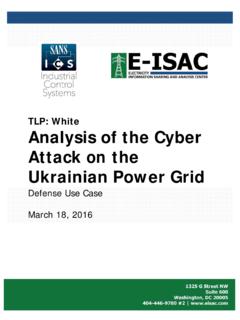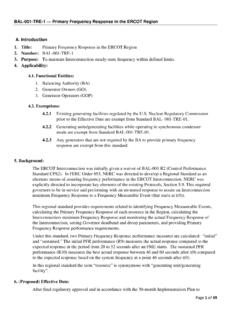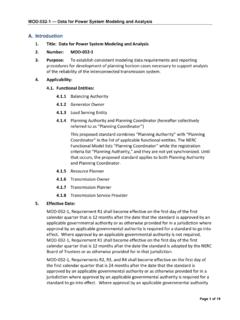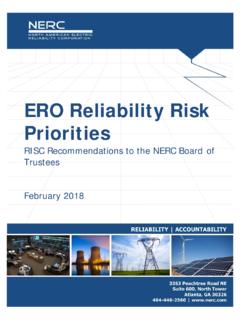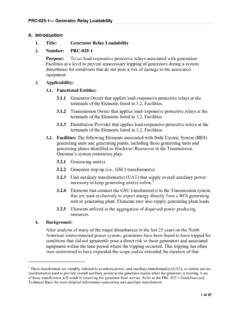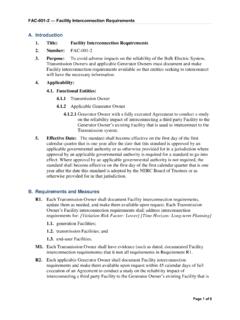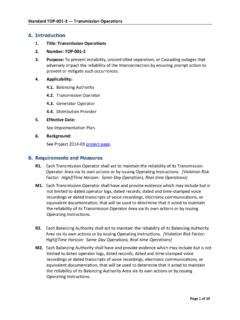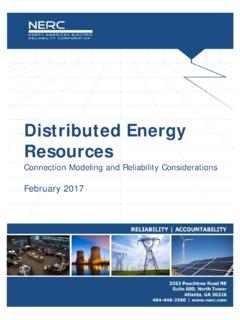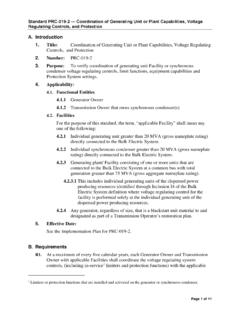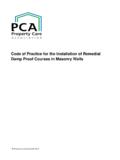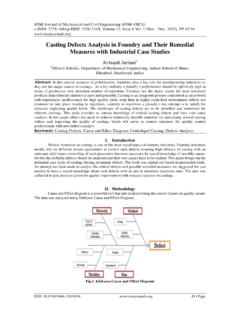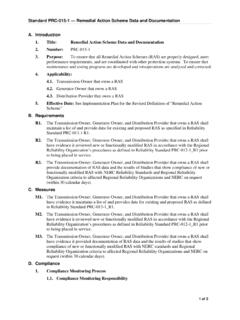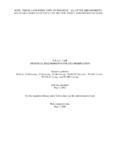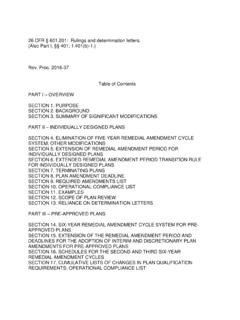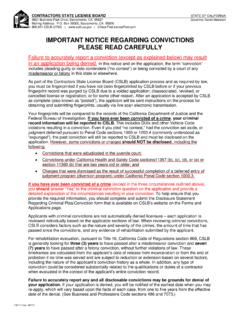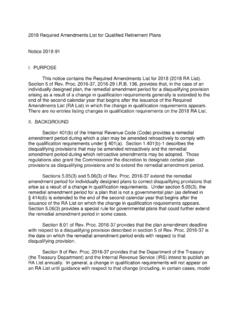Transcription of PRC-012-2 – Remedial Action Schemes - nerc.com
1 PRC-012-2 Remedial Action Schemes Page 1 of 49 A. Introduction 1. Title: Remedial Action Schemes 2. Number: PRC-012-2 3. Purpose: To ensure that Remedial Action Schemes (RAS) do not introduce unintentional or unacceptable reliability risks to the Bulk Electric System (BES). 4. Applicability: Functional Entities: Reliability Coordinator Planning Coordinator RAS-entity the Transmission Owner, Generator Owner, or Distribution Provider that owns all or part of a RAS Facilities: Remedial Action Schemes (RAS) 5.
2 Effective Date: See the Implementation Plan for PRC-012-2 . B. Requirements and Measures R1. Prior to placing a new or functionally modified RAS in service or retiring an existing RAS, each RAS-entity shall provide the information identified in Attachment 1 for review to the Reliability Coordinator(s) where the RAS is located. [Violation Risk Factor: Medium] [Time Horizon: Operations Planning] M1. Acceptable evidence may include, but is not limited to, a copy of the Attachment 1 documentation and the dated communications with the reviewing Reliability Coordinator(s) in accordance with Requirement R1.
3 R2. Each Reliability Coordinator that receives Attachment 1 information pursuant to Requirement R1 shall, within four full calendar months of receipt or on a mutually agreed upon schedule, perform a review of the RAS in accordance with Attachment 2, and provide written feedback to each RAS-entity. [Violation Risk Factor: Medium] [Time Horizon: Operations Planning] M2. Acceptable evidence may include, but is not limited to, dated reports, checklists, or other documentation detailing the RAS review, and the dated communications with the RAS-entity in accordance with Requirement R2.
4 R3. Prior to placing a new or functionally modified RAS in service or retiring an existing RAS, each RAS-entity that receives feedback from the reviewing Reliability Coordinator(s) identifying reliability issue(s) shall resolve each issue to obtain approval of the RAS from each reviewing Reliability Coordinator. [Violation Risk Factor: Medium] [Time Horizon: Operations Planning] PRC-012-2 Remedial Action Schemes Page 2 of 49 M3. Acceptable evidence may include, but is not limited to, dated documentation and communications with the reviewing Reliability Coordinator that no reliability issues were identified during the review or that all identified reliability issues were resolved in accordance with Requirement R3.
5 R4. Each Planning Coordinator, at least once every five full calendar years, shall: [Violation Risk Factor: Medium] [Time Horizon: Long-term Planning] Perform an evaluation of each RAS within its planning area to determine whether: The RAS mitigates the System condition(s) or Contingency(ies) for which it was designed. The RAS avoids adverse interactions with other RAS, and protection and control systems. For limited impact1 RAS, the inadvertent operation of the RAS or the failure of the RAS to operate does not cause or contribute to BES Cascading, uncontrolled separation, angular instability, voltage instability, voltage collapse, or unacceptably damped oscillations.
6 Except for limited impact RAS, the possible inadvertent operation of the RAS, resulting from any single RAS component malfunction satisfies all of the following: The BES shall remain stable. Cascading shall not occur. Applicable Facility Ratings shall not be exceeded. BES voltages shall be within post-Contingency voltage limits and post-Contingency voltage deviation limits as established by the Transmission Planner and the Planning Coordinator. Transient voltage responses shall be within acceptable limits as established by the Transmission Planner and the Planning Coordinator.
7 Except for limited impact RAS, a single component failure in the RAS, when the RAS is intended to operate does not prevent the BES from meeting the same performance requirements (defined in Reliability Standard TPL-001-4 or its successor) as those required for the events and conditions for which the RAS is designed. 1 A RAS designated as limited impact cannot, by inadvertent operation or failure to operate, cause or contribute to BES Cascading, uncontrolled separation, angular instability, voltage instability, voltage collapse, or unacceptably damped oscillations.
8 PRC-012-2 Remedial Action Schemes Page 3 of 49 Provide the results of the RAS evaluation including any identified deficiencies to each reviewing Reliability Coordinator and RAS-entity, and each impacted Transmission Planner and Planning Coordinator. M4. Acceptable evidence may include, but is not limited to, dated reports or other documentation of the analyses comprising the evaluation(s) of each RAS and dated communications with the RAS-entity(ies), Transmission Planner(s), Planning Coordinator(s), and the reviewing Reliability Coordinator(s) in accordance with Requirement R4.
9 R5. Each RAS-entity, within 120 full calendar days of a RAS operation or a failure of its RAS to operate when expected, or on a mutually agreed upon schedule with its reviewing Reliability Coordinator(s), shall: [Violation Risk Factor: Medium] [Time Horizon: Operations Planning] Participate in analyzing the RAS operational performance to determine whether: The System events and/or conditions appropriately triggered the RAS. The RAS responded as designed. The RAS was effective in mitigating BES performance issues it was designed to address.
10 The RAS operation resulted in any unintended or adverse BES response. Provide the results of RAS operational performance analysis that identified any deficiencies to its reviewing Reliability Coordinator(s). M5. Acceptable evidence may include, but is not limited to, dated documentation detailing the results of the RAS operational performance analysis and dated communications with participating RAS-entities and the reviewing Reliability Coordinator(s) in accordance with Requirement R5. R6. Each RAS-entity shall participate in developing a Corrective Action Plan (CAP) and submit the CAP to its reviewing Reliability Coordinator(s) within six full calendar months of: [Violation Risk Factor: Medium] [Time Horizon: Operations Planning, Long-term Planning] Being notified of a deficiency in its RAS pursuant to Requirement R4, or Notifying the Reliability Coordinator of a deficiency pursuant to Requirement R5, Part , or Identifying a deficiency in its RAS pursuant to Requirement R8.
